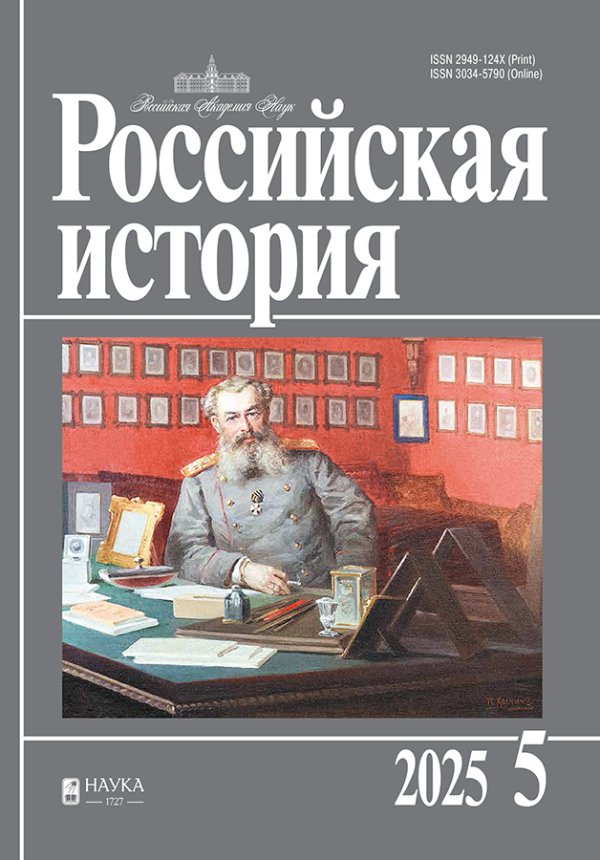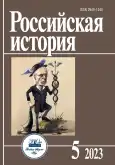"Pacification and control": mongol rule in Rus’ in the mid-13th century
- Authors: Maiorov A.V.1
-
Affiliations:
- Saint Petersburg State University
- Issue: No 5 (2023)
- Pages: 3-22
- Section: Articles
- URL: https://journals.rcsi.science/2949-124X/article/view/233885
- DOI: https://doi.org/10.31857/S2949124X23050012
- EDN: https://elibrary.ru/OWPMBC
- ID: 233885
Cite item
Full Text
Abstract
Keywords
About the authors
Alexander Vyacheslavovich Maiorov
Saint Petersburg State UniversitySaint Petersburg, Russia
References
- Бартольд В. В. Туркестан в эпоху монгольского нашествия // Бартольд В. В. Сочинения. М., 1963. Т. 1.
- Бегунов Ю. К. Житие Александра Невского. Первая редакция. 1280-е годы. Реконструкция текста // Князь Александр Невский и его эпоха. Исследования и материалы / Под ред. Ю. К. Бегунова и А. Н. Кирпичникова. СПб., 1995. С. 190-195.
- Галицько-Волинський лiтопис: текстологiя / За ред. О. П. Толочка. Київ, 2020.
- Горский А. А. Первые вызовы русских князей к монгольским правителям: 1242-1243 годы // Золотоордынское обозрение. 2022. Т. 10. С. 309.
- Горский А. А. Свидетели путешествия Плано Карпини: уникальная информация и ошибки прочтения // Древняя Русь. Вопросы медиевистики. 2014. № 3 (57). С. 120.
- Горский А. А. Утверждение власти Монгольской империи над Русью: региональные особенности // Исторический вестник. 2014. Т. 10 (157). С. 65.
- Дашкевич Н. П. Княжение Даниила Галицкого по русским и иностранным известиям. Киев, 1873.
- Егоров В. Л. Историческая география Золотой Орды. М., 1985.
- Иванова Е. Е. К вопросу об ордынской политике Даниила Романовича Галицкого // Древняя Русь. Вопросы медиевистики. 2013. № 2 (52). С. 41.
- Иоанн де Плано Карпини. История монголов: текст, перевод, комментарий / Пер. А. А. Вовина, П. В. Лукина; под ред. А. А. Горского, В. В. Трепавлова. М., 2022.
- Козин С. А. Сокровенное сказание. Монгольская хроника 1240 г. М.; Л., 1941. С. 194.
- Костюков В. П. Иранский поход Хулагу: предыстория // Проблемы истории, филологии, культуры. 2009. Вып. 23. С. 217-234.
- Костюков В. П. Улус Джучи и синдром федерализма // Проблемы истории, филологии, культуры. 2007. Вып. 17. С. 454-455.
- Кучкин В. А. Владимирское княжество в послемонгольское время // Древняя Русь. Вопросы медиевистики. 2022. № 2 (88). С. 23.
- Кушкумбаев А. К. Крыльевая система в Улусе Джучи // Золотоордынское наследие. Материалы Международной научной конференции "Политическая и социально-экономическая история Золотой Орды (XIII-XV вв.)". Казань, 2009. С. 84-85.
- Лубсан Данзан. Алтан Тобчи / Пер. Н. П. Шастиной. М., 1973.
- Майоров А. В. Александр Невский, Бату и хан Мунке: нашествие Неврюя и контроль над русскими землями // Древняя Русь. Вопросы медиевистики. 2022. № 4 (90). С. 23-38.
- Майоров А. В. Даниил Галицкий в пути к хану Батыю: к спорам о продолжительности поездки князя в Орду // Stratum plus. 2016. № 6. С. 195-202.
- Майоров А. В. Милей, Куремса и хан Мунке: Южная Русь под монгольским контролем // Древняя Русь. Вопросы медиевистики. 2023. № 2 (92).
- Майоров А. В. Русские земли в фискальной политике хана Мунке // Вестник Санкт-Петербургского университета. Серия 2: История. 2022. Вып. 4. С. 1033-1046.
- Майоров А. В. Русские князья после нашествия Батыя: борьба за Галич и Киев // Stratum plus. 2016. № 5. С. 49-56.
- Маслова С. А. Монгольская администрация на завоеванных землях: даруги и баскаки // Исторический вестник. 2014. Т. 10 (157). С. 80-109.
- Насонов А. Н. Монголы и Русь. М.; Л., 1940.
- Палладий (Кафаров). Старинное монгольское сказание о Чингисхане // Труды членов российской духовной миссии в Пекине. СПб., 1866. Т. 4.
- Петров П. Н. Деньги и денежная политика Джучидов в XIII-XV вв. // Золотая Орда в мировой истории. С. 621.
- Порсин А. А. История Золотой Орды конца XIII - начала XIV века в труде Рукн ад-Дина Бейбарса ал-Мансури "Зубдат ал- фикра". Казань, 2018.
- Рашид ад-Дин. Сборник летописей. Т. I. Кн. 2 / Пер. О. И. Смирновой; под ред. А. А. Семенова. М.; Л., 1952.
- Селезнев Ю. В. Галицко-Волынская летопись как источник по истории Джучиева улуса // Золотоордынская цивилизация. 2016. № 9. С. 126.
- Селезнев Ю. В. К вопросу о происхождении полководца Бурундая // Золотоордынское обозрение. 2021. Т. 9. С. 236-246.
- Трепавлов В. В. Административное устройство. Организация управления // Золотая Орда в мировой истории / Отв. ред. И. Миргалеев, Р. Хаутала. Казань, 2017. С. 154.
- Трепавлов В. В. Система крыльев и административное устройство. Проблема Ак-Орды и Кок-Орды // История татар с древнейших времен. Казань, 2009. Т. 3. С. 188-189.
- Храпачевский Р. П. Армия монголов периода завоевания Древней Руси. М., 2011.
- Храпачевский Р. П. Экономическая составляющая "Неврюевой рати" (по монгольским источникам) // Восточная Европа в древности и средневековье. XXV чтения памяти В. Т. Пашуто и А. П. Новосельцева. М., 2013. С. 266-267.
- Черепнин Л. В. Монголо-татары на Руси (XIII в.) // Татаро-монголы в Азии и Европе / Отв. ред. С. Л. Тихвинский. М., 1977. С. 190.
- Черкас Б. Территориальное устройство Улуса Джучи (территория западнее Дона) // Золотая Орда в мировой истории. С. 162.
- Allsen T. Mongol Imperialism: The Policies of the Grand Qan Möngke in China, Russia, and the Islamic Lands, 1251-1259. Berkeley etc., 1987.
- Allsen T. Mongols and North Caucasia // Archivum Eurasiae medii aevi. 1987-1991. Vol. 7. P. 32.
- Atwood C. P., Struve L. The Rise of the Mongols: Five Chinese Sources. Indianapolis, 2021.
- Atwood Ch. Encyclopedia of Mongolia and the Mongol Empire. New York, 2004.
- Baronas D. The encounter between forest Lithuanians and steppe Tatars in the time of Mindaugas // Lithuanian Historical Studies. 2006. Vol. 11. P. 1-16.
- Buell P. D. Kalmyk Tanggaci people: thoughts on the mechanics and impact of Mongol expansion // Mongolian Studies. 1980. Vol. 6. P. 45-50.
- Cleaves F. W. The Mongolian Names and Terms in the History of the Nation of the Archers by Grigor of Akanc // Harvard Journal of Asiatic Studies. 1949. Vol. 12. P. 433-435.
- Dąbrowski D. Daniel Romanowicz król Rusi (ok. 1201-1264). Biografia polityczna. Kraków, 2012.
- Doerfer G. Türkische und mongolische Elemente im Neupersischen. Wiesbaden, 1963. Bd. I.
- Endicott-West E. Mongolian rule in China. Local administration in the Yuan Dynasty. Cambridge MA, 1989.
- Farquhar D. M. The Government of China under Mongolian Rule: A Reference Guide. Stuttgart, 1990.
- Favereau M. The Horde. How the Mongols changed the World. Cambridge, MA, 2021.
- Giovanni di Pian di Carpine. Storia dei Mongoli / Eds. E. Menestò et al. Spoleto, 1989.
- Hambis L. Le chapitre CVIII du Yuan che: les fiefs attribués aux membres de la famille impériale et aux ministres de la cour mongole d'après l'histoire chinoise officielle de la dynastie mongole. Leiden, 1954.
- Hope M. The Tamma of Azerbaijan in Regional and Imperial Contexts (1228-61) // Iran and the Caucasus. 2023 (forthcoming).
- Hsiao Ch. The Military Establishment of the Yuan Dynasty. Cambridge, MA; London, 1978.
- Jackson P. The Mongols and the Islamic World from Conquest to Conversion. Now Haven; London, 2017.
- Jackson P. The Mongols and the West, 1221-1410. London, 2018.
- Khabtagaeva В. Colour Names und their Suffixes. A study on the History of Mongolian Word Formation // Acta Orientalia Academiae Scientiarum Hungaricae. 2001. Vol. 54. P. 110.
- Kim H. A Reappraisal of Güyüg Khan // Mongols, Turks, and Others. Eurasian Nomads and the Sedentary World / Eds. R. Amitai, M. Biran. Leiden; Boston, 2005. P. 330-331.
- Kronika halicko-wołyńska (Kronika Romanowiczów) / Wyd. D. Dabrowski, A. Jusupovic. Kraków, 2017.
- Maiorov A. V. The Dragon Turns its Gaze to the West: The Mongol Empire's Global Diplomacy in the Mirror of Outsiders' Chronicles // English Historical Review. 2023 (forthcoming).
- Maiorov A. V. The First Mongol Invasion of Europe: Goals and Results // Journal of the Royal Asiatic Society. Third Series. 2022. Vol. 32. P. 411-438.
- Maiorov A. V. The Mongol Conquest of Rus' // The Mongol World / Eds. T. May, M. Hope. London; New York, 2022. P. 166.
- May T. Conquest of the Dasht-i Qipchaq // The Mongol World / Eds. T. May, M. Hope. London; New York, 2022. P. 156.
- May T. Mongol Conquest Strategy in the Middle East // The Mongols' Middle East. Continuity and Transformation in Ilkhanid Iran / Eds. B. de Nicola, Ch. Melville. Leiden; Boston, 2016. P. 15-22.
- May T. The Ilkhanate and Afghanistan // New Approaches to Ilkhanid History / Eds. B. Dashdondog, Ch. P. Atwood, T. May. Leiden; Boston, 2020. P. 272-320.
- May T. The Mongol Empire. Edinburgh, 2018.
- Ostrowski D. City Names of the Western Steppe at the Time of the Mongol Invasion // Bulletin of the School of Oriental and African Studies, University of London. 1998. Vol. 61. P. 465-475.
- Ostrowski D. The Tamma and the Dual-Administrative Structure of the Mongol Empire // Bulletin of the School of Oriental and African Studies, University of London. 1998. Vol. 61. P. 262-266.
- Pelliot P. Le nom du χwārizm dans les textes chinois // T'oung Pao. Second Series. 1938. Vol. 34. P. 150-152.
- Pelliot P. Les mots mongols dans le Korye să // Journal asiatique. 1930. Vol. 217. P. 261.
- Pelliot P. Notes on Marco Polo. Paris, 1959. T. I.
- Pelliot P. Notes sur l'histoire de la Horde d'Or. Paris, 1949.
- Pelliot P. Recherches sur les Chrétiens d'Asie Centrale et d'Extrême Orient. Рaris, 1973.
- Pow S. Conquest and Withdrawal: The Mongol Invasions of Europe in the Thirteenth Century. Doctoral Dissertation. Budapest, 2020.
- Pow S., Liao J. Subutai: Sorting fact from fiction surrounding the Mongol Empire's greatest general (with translations of Subutai's two biographies in the Yuan Shi) // Journal of Chinese Military History. 2018. Vol. 7. P. 58.
- Pulleyblank E. Lexicon of Reconstructed Pronunciation in Early Middle Chinese, Late Middle Chinese, and Early Mandarin. Vancouver, 1991.
- Qu Dafeng. Ά new study concerning an explanation of the word "Tamaci" and the Tamaci army // Central Asiatic Journal. 2003. Vol. 47. P. 242-249.
- Rashiduddin Fazlullah's Jami‘u't-Tawarikh: Compendium of Chronicles - A History of the Mongols / Transl. W. M. Thackston. Cambridge, MA, 1998-1999.
- Relation des Mongols ou Tartares par le frère Jean du Plan de Carpin / Ed. M. d'Avezac. Paris, 1838.
- Sălăgean T. Transylvania in the Second Half of the Thirteenth Century. Leiden; Boston, 2016.
- Sarnowsky J. The Teutonic Order confronts Mongols and Turks // The Military Orders. Fighting for the Faith and Caring for the Sick / Ed. M. Barber. Aldershot, 1994. P. 256-257.
- Tatár S. Roads Used by the Mongols into Hungary, 1241-1242 // Proceedings of the 10th International Congress of Mongolists. Ulaan Baatar, 2012. Vol. 1. P. 334.
- The Secret History of the Mongols. A Mongolian Epic Chronicle of the Thirteenth Century / Transl. with a hist. and philol. comment. I. de Rachewiltz. Leiden; Boston, 2004.
- Togan I. Mongolia before Chinggis Khan // The Mongol World. P. 42-48.
- Uzelac A. Saint Louis and the Jochids // Golden Horde Review. 2020. Vol. 8. P. 662-674.
- Vásáry I. The Origin of the Institution of Basqaqs // Acta Orientalia Academiae Scientiarum Hungaricae. 1978. Vol. 32. P. 201-206.
- Vásáry I. The Tatar Factor and Muscovy's Political Culture // Nomads as Agents of Cultural Change. The Mongols and Their Eurasian Predecessors / Eds. R. Amitai, M. Biran. Honolulu, 2015. P. 255-257.
- Zhao G. Q. Marriage as Political Strategy and Cultural Expression. Mongolian Royal Marriages from World Empire to Yuan Dynasty. New York etc., 2008.
Supplementary files










